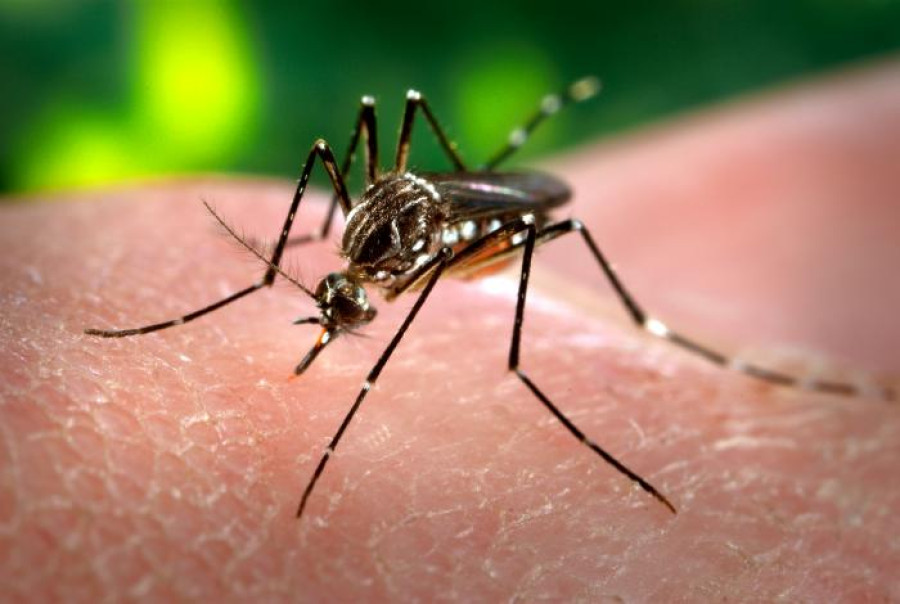Columns
Chikungunya virus: An emerging disease
Studies in recent years have shown that CHIKV is becoming a more fatal disease than previously reported.
Dr Sher Bahadur Pun
The Chikungunya virus (CHIKV) was first identified in Tanzania in 1952. The word “Chikungunya” is derived from the Tanzanian Makonde language, which means “stooped walk”, referring to the infection that causes severe joint and muscle pain. In India, the virus was identified in the early 1960s and remained active until 1973. After a 32-year interval, it re-emerged as a massive outbreak in 2006. CHIKV was first discovered in Nepal (by the author) in 2013, and it has since been regularly observed, particularly during monsoon and post-monsoon seasons.
Chikungunya, a viral disease, is primarily transmitted by the bite of infected Aedes mosquitoes, known as Aedes aegypti or Aedes albopictus, which are also responsible for the spread of the dengue virus. During the 2022 dengue outbreak, hundreds of people with dengue-like illnesses, who visited the Sukraraj Tropical and Infectious Disease Hospital, tested negative for the dengue virus, most of whom were even unable to stand on their own. Nonetheless, CHIKV was not tested, and the surveillance system did not include CHIKV, which is responsible for the “Stooped Walk” disease. The virus might have been widely circulated but overlooked during the dengue outbreak.
The Aedes mosquitoes are well established in Kathmandu as well as other parts of the country. In addition to CHIKV and dengue, these mosquitoes can carry and spread other viral infections such as zika, yellow fever, rift valley, etc. However, no resources about these viral infections are available in Nepal, although non-dengue illnesses have risen in recent years, especially during mosquito seasons—monsoon and post-monsoon.
During the 2022 dengue outbreak, uncontrolled mosquito populations were observed, and mosquitoes were present in almost every house in Kathmandu. Perhaps this is why Nepal experienced its largest-ever dengue outbreak in history, with 53,951 dengue patients officially recorded, according to the Epidemiology and Disease Control Division recorded during the six months (from July to December 2022). Of the total, 62 deaths (0.1 percent) were reported due to dengue-related complications. Nevertheless, the number of dengue cases might have been much higher (if not at least more than double the recorded cases/over 100,000 cases) than what was recorded. Patients with dengue-like illnesses are reluctant to visit hospitals as there is no specific medicine for dengue. The illness has to be treated using paracetamol or oral rehydration therapy.
Fever, associated with severe joint and muscle pain, is the most common symptom of CHIKV. Symptoms usually appear 2-12 days after exposure to the virus, although one-third of the infected patients may not complain of symptoms. Its other symptoms include headache, nausea/vomiting, fatigue, red eyes, and rash. Although these symptoms are similar to those of the dengue virus, CHIKV is considered less severe/fatal than dengue because complications such as hemorrhagic (bleeding) and signs of shock are uncommon for CHIKV. This could be one reason for not visiting hospitals despite having a dengue-like illness during the dengue outbreak last year. Studies have shown that platelet counts of less than 100,000 per microliter of blood are indications (or more likely) of dengue infection compared to CHIKV. During the 2022 dengue outbreak, 90 percent of the patients with dengue-like illness had platelets count above 100,000 per microliter of blood, meaning they were more likely to be infected with CHIKV infections, and almost all these patients experienced severe joint and muscle pain.
A growing number of studies in recent years have shown that CHIKV is becoming a more fatal disease than previously thought or reported. A study conducted in Brazil in 2016 revealed surprising results about higher deaths directly attributable to CHIKV. Moreover, 23.5 percent of CHIKV deaths occurred in young adults, and almost half of the fatal cases had no underlying medical conditions. During the 2006 CHIKV outbreak in Ahmedabad city, India, the mortality rate was estimated to be nearly 12 percent. In 2017, Nepal reported deaths due to CHIKV complications for the first time, with two (in Chitwan) out of four (50 percent) people dying from the virus. During the 2022 dengue outbreak, many patients with dengue-like illness (dengue negative) were admitted to intensive care units in different hospitals in Kathmandu following neurological complications (personal communication with the patient’s relatives). Recent studies have shown an association between neurological complications and CHIKV. It, hence, indicates that CHIKV is turning more fatal, and the reason for this might be due to continued genetic mutations, but it warrants further investigations.
The Aedes mosquito—a vector for CHIKV and other emerging viruses—will become the biggest challenge in the 21st century for human health, owing to its day-biting behaviour. People may not be able to prevent themselves from mosquito bites, especially during the day working hours in offices, schools, colleges, and even health care centres, since such places are not designed or prepared to prevent mosquitoes from entering these areas. Sleeping under a bed net may reduce mosquito bites at night but are not useful for a day-biter Aedes mosquito. The suggestion for wearing long or full sleeves clothes is not feasible due to the hot-humid and rainy season. Thus, the time has come to reconsider or re-design preventive measures (guidelines) based on mosquito behaviour and habits.




 13.12°C Kathmandu
13.12°C Kathmandu















